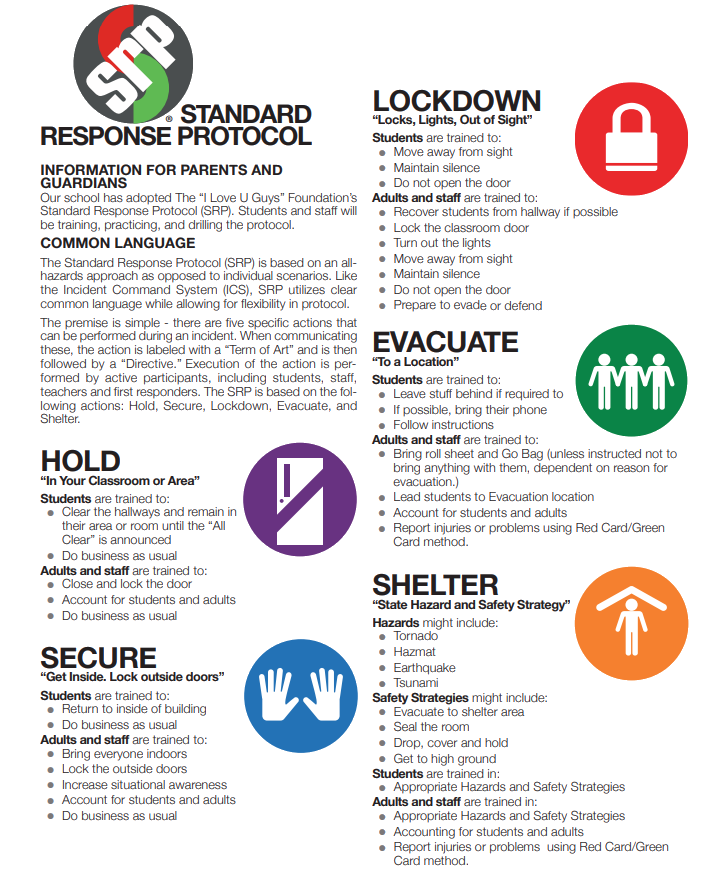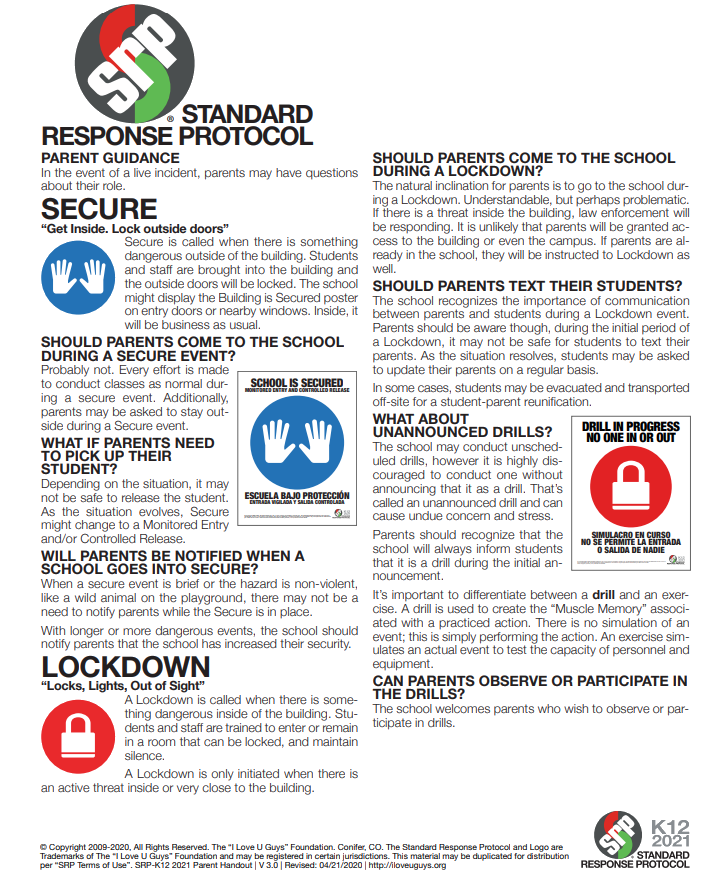Safety at Mills Elementary

Keeping all our Mountain Lions safe while they are at Mills is our biggest priority each day. In addition to following all TEA and AISD protocols, our school's enhanced security processes aim to proactively prevent emergencies and safety breaches. These processes include monthly Staff Safety Committee meetings, weekly door checks, daily campus sweeps, continuous monitoring of interior and exterior cameras, and keeping interior and exterior doors closed and locked.
Why do we complete drills?
The more we drill and practice how to respond to an event, the better prepared we will be in an actual emergency. Drills create muscle memory, which can be life saving in a crisis situation by allowing people to react quickly and rely on their training, and not have to think about what to do. Drilling also allows us to see what works well and how to make plans even more effective. During drills, students and staff will always be told that it is only a practice drill, and that there is not an actual emergency on campus.
There are five drill events to ensure the safety of all students and staff in an emergency:
Lockdown
A lockdown drill trains staff and students to stay behind a locked door, shut the lights off, remain seated, remain quiet, and out of sight in case of a threat is inside the school. We perform this announced drill once per semester.
Shelter
Shelter drills are used for emergencies such as a hazmat incident or bad weather (such as a tornado) and trains staff and students to seek shelter in a particular area of the building which is deemed safe. In a tornado this would be a portion of the building which is on the lowest floor, away from windows and doors. We perform this announced drill once a year for tornados and once a year for a hazmat incident.
Lockout
A secure lockout drill is used when there is a threat on the outside of the building. It teaches all staff and students to get inside, lock outside doors and conduct business as usual. We perform this drill once per semester.
Evacuate
An evacuation drill teaches staff and students to exit the building quickly, safely, and efficiently. In a fire drill, students and staff are directed to go to rally points which are pre-determined and are a safe distance away from the building. We perform this unannounced drill each month, August through May.
Hold
A hold drill teaches staff and students to remain where they are and continue business as usual. A ‘Hold’ would usually be called to clear the hallways for a medical emergency, physical altercation etc. We perform this drill once per semester.
Standard Response Protocol


What is the Standard Response Protocol?
“A uniform, planned, and practiced response to any incident is the foundation of a safe school. The SRP is action-based, flexible, and easy to learn. It rationally organizes tactics for response to weather events, fires, accidents, intruders and other threats to student safety.”
—i love u guys Foundation
What is Student Reunification?
“Circumstances may occur at the school that require parents to pick up their students in a formalized, controlled release. This process is called a Reunification and may be necessary due to weather, a power outage, hazmat or if a crisis occurs at the school. The Standard Reunification Method is a protocol that makes this process more predictable and less chaotic for all involved. Because a reunification is not a typical end of school day event, a reunification may occur at a different location than the school a student attends.”
—i love u guys Foundation
Why is having a plan important?
A uniformed, organized, action plan will help keep your child safe during emergencies which may occur while on AISD property. By conducting drills and having emergency operations plans on every campus, it is the goal of the District to be prepared for any incident which may occur. Emergency Management is passionate about educating students, staff, and parents to promote a culture of preparedness which will lessen the impact when disaster strikes.
What is a safety and security audit and why do we do them?
“The Audit process developed by the Texas School Safety Center was designed as a self-assessment of a district’s safety and security. Audits are an ongoing process with the aim of identifying hazards, threats, and vulnerabilities that may pose a danger to life or property or may interfere with a safe, secure and healthy environment that is conducive to teaching and learning.” - Texas School Safety Center
What to do in a school emergency?
- Watch your cell phone! AISD will send an alert to the cell phone we have listed on file if an emergency were to occur.
- Go to the internet! Information will be posted on the Austin ISD website.
- Do NOT go to the scene until you are instructed to do so.
You can be assured that accurate and timely information will be released to parents, the public, and all local media outlets by District officials. We ask that you please wait to receive important information by AISD before arriving at a school or scene of an emergency.
How will I be able to locate my child in an emergency?
If AISD determines that students and staff would be safer at another location due to an emergency, the campus will be evacuated. The District has identified alternative locations to be used in these events and will notify you of a specific pickup location. Parents and guardians will be required to show proper identification in order to pick up their child. Please remember, for your child's safety, a student will only be released to a parent, guardian, or an adult listed on their emergency contact form.
What can students do in an emergency?
Regardless of how old you are, the best thing that a student can do in an emergency is stay calm and listen to those in authority. Follow instructions from teachers or first responders and do exactly as they have asked. It is important to take drills seriously and report any security concerns to school administrators. If you see something, say something! If you see a social media post which is unsettling, or hear an alarming statement made by another student, report it immediately. Students can confide in any trusted adult, including teachers, school counselors, school resource officers, etc. Additionally, older students can take training courses such as CPR, Stop the Bleed, CERT training, or online classes through FEMA’s Independent Learning platform.
